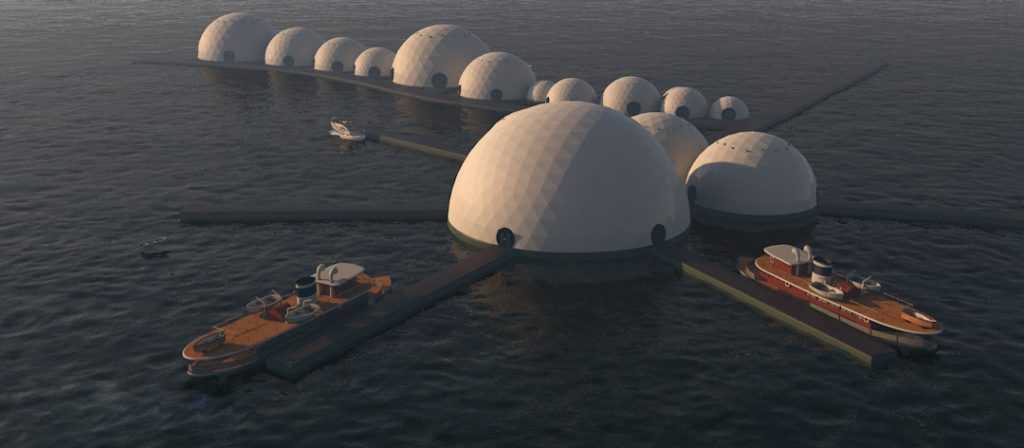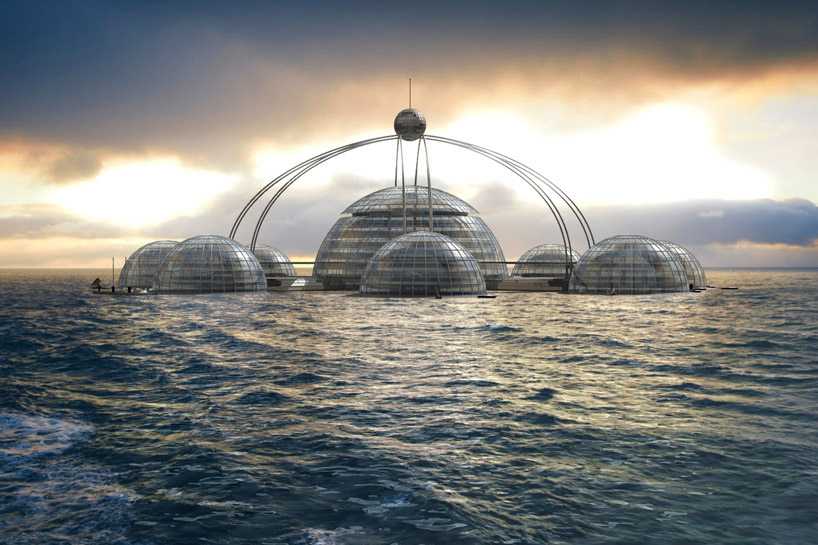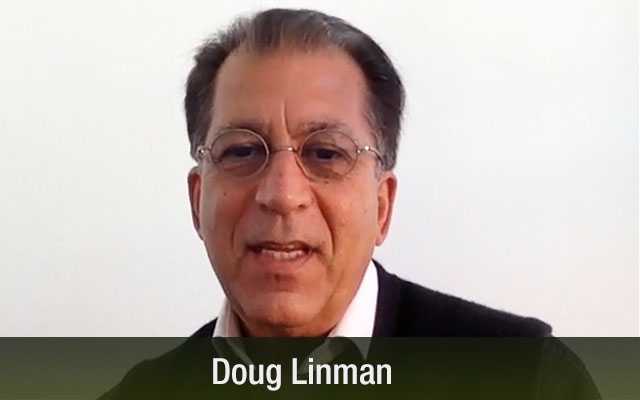 “Between Cyberspace & Outerspace lies the possibility of settling the oceans.” ―Peter Thiel, PayPal co-founder & early investor in The Seasteading Institute (2009)
Why Floating Islands?
So, what makes floating islands so special? Whether large or small, wherever there’s land mass in the open ocean, ocean circulation patterns change, creating optimal conditions for sea life and other biological species to thrive.
Mother Nature has done a pretty good job birthing and midwifing islands and continents that support life and continually nourish and replenish Earth’s delicate ecosystem. We humans have done a pretty good job of messing up our home planet. Now our Earth Mother needs her children to rise to the occasion and clean up our mess – thereby circumventing a 7th mass extinction.
“Between Cyberspace & Outerspace lies the possibility of settling the oceans.” ―Peter Thiel, PayPal co-founder & early investor in The Seasteading Institute (2009)
Why Floating Islands?
So, what makes floating islands so special? Whether large or small, wherever there’s land mass in the open ocean, ocean circulation patterns change, creating optimal conditions for sea life and other biological species to thrive.
Mother Nature has done a pretty good job birthing and midwifing islands and continents that support life and continually nourish and replenish Earth’s delicate ecosystem. We humans have done a pretty good job of messing up our home planet. Now our Earth Mother needs her children to rise to the occasion and clean up our mess – thereby circumventing a 7th mass extinction.
Here are 5 well-researched reasons why ‘Floating Islands’ (aka Seasteading) will facilitate with Marine Ecosystem Restoration:
- As discussed in Part 1, the Island Mass Effect plays a key role in the creation of coral reef ecosystems. A floating island has the prospect of becoming home to thousands of diverse marine species.
- Islands are biodiversity hotspots that attract other species, such as birds, reptiles and plant varieties. Floating islands can host rest stops and nesting sites for birds and become habitats to preserve endangered species.
- Islands are sea level indicators and conservation frontiers. Due to climate change, Islanders who understand the dangers of sea level rise have become activists and leaders in conservation and climate change issues. Floating islands, acting as barrier reefs, have the potential of mitigating the effects of sea level rise by protecting coastal and island populations from storm surges and tidal waves.
- Floating Islands can clean up polluted waters, facilitate ocean water filtration and generate electricity from ocean currents, waves, solar, wind or other electricity producing methods.
- Islands house over 600 million people worldwide. Floating Islands can support thriving coastal and island communities, feed the world, create jobs and foster ecotourism travel to beautiful places.
 “Floating islands are a powerful and effective way to support sustainable ocean farming practices.” ― Pacific Domes, Inc.
Seasteads could be an environmental godsend for our battered and abused oceans. From restoring coastal ‘dead zones’ to removing CO2 from the air using algae, Joe Quirk presents a talk on behalf of the Clean Tech Open at Autodesk (a company that builds software that helps people imagine, design & make a better world).
“Floating islands are a powerful and effective way to support sustainable ocean farming practices.” ― Pacific Domes, Inc.
Seasteads could be an environmental godsend for our battered and abused oceans. From restoring coastal ‘dead zones’ to removing CO2 from the air using algae, Joe Quirk presents a talk on behalf of the Clean Tech Open at Autodesk (a company that builds software that helps people imagine, design & make a better world).
How Seasteading Will Restore the Environment (25:17 min.)

 Doug Linman, PhD, U.S.A., is the pioneer of Solar Liquid Power and founder of Molecular Quartermasters Corporation (MQ). A New Earth University fellow and senior NEST faculty advisor, Doug has attracted the attention and recognition of the International Space Station (ISS) with his latest breakthrough SLP technology.
“We look forward to our production establishment efforts and our planned work around the world — first in sustainability communities, and also in E-Transportation. Our first clients will become our long-term customers time and time again, choosing us for all their renewable energy needs and our advanced innovations.” ―Dr. Doug Linman (MQ)/ (NEST)
About Solar Liquid Power (SLP)
Solar Liquid Power is a scientific breakthrough in nanotechnology, which captures energy directly from the sun in nano-scale covering for planetary energy needs and beyond. In late 2015, the Founders of MQ Corporation and NEST announced successful testing of MQ’S breakthrough Solar Liquid Power (SLP), under demanding microgravity and low earth radiation conditions onboard the International Space Station (ISS). Solar Liquid Power was one of 13 chosen global experiments.
Having met rigorous preparation deadlines to coat and test the ISS designed modules, a transport rocket was launched on December 6, 2015 to the ISS delivering station. MQ Corporation’s SLP was the first new renewable energy source chosen for this high demand level testing. The unprecedented tests performed by the onboard astronauts were historic, displaying somewhat higher levels of output in the infrared and gamma frequencies.” (Source: New Earth Media)
Doug Linman, PhD, U.S.A., is the pioneer of Solar Liquid Power and founder of Molecular Quartermasters Corporation (MQ). A New Earth University fellow and senior NEST faculty advisor, Doug has attracted the attention and recognition of the International Space Station (ISS) with his latest breakthrough SLP technology.
“We look forward to our production establishment efforts and our planned work around the world — first in sustainability communities, and also in E-Transportation. Our first clients will become our long-term customers time and time again, choosing us for all their renewable energy needs and our advanced innovations.” ―Dr. Doug Linman (MQ)/ (NEST)
About Solar Liquid Power (SLP)
Solar Liquid Power is a scientific breakthrough in nanotechnology, which captures energy directly from the sun in nano-scale covering for planetary energy needs and beyond. In late 2015, the Founders of MQ Corporation and NEST announced successful testing of MQ’S breakthrough Solar Liquid Power (SLP), under demanding microgravity and low earth radiation conditions onboard the International Space Station (ISS). Solar Liquid Power was one of 13 chosen global experiments.
Having met rigorous preparation deadlines to coat and test the ISS designed modules, a transport rocket was launched on December 6, 2015 to the ISS delivering station. MQ Corporation’s SLP was the first new renewable energy source chosen for this high demand level testing. The unprecedented tests performed by the onboard astronauts were historic, displaying somewhat higher levels of output in the infrared and gamma frequencies.” (Source: New Earth Media)
New Earth University: New Earth Project – Solar Liquid Power (SLP) (3: min)

